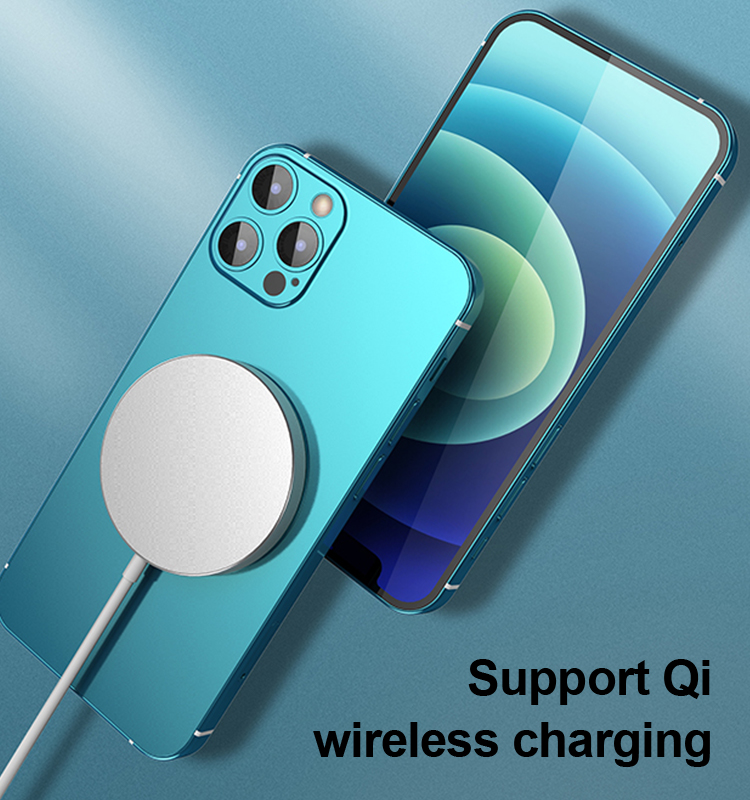
In October of last year, Apple rolled out its latest smartphones with the iPhone 12. While there are some similarities to previous iPhones, there's one notable difference under the hood that enables a new accessory: MagSafe, a magnetic connector that can wirelessly charge your phone.
What's so special about MagSafe?
MagSafe is both a magnetic induction charging and a magnetic connector technology. The MagSafe trademark is re-used from an entirely different magnetic charging connector for older generation Macbook Pro laptops phased out in early 2019.
The disc-shaped connector contains rare-earth magnets that allow it to snap and firmly attach to the back of an iPhone. It is about twice the diameter of the magnetic charging connector already in use on the Apple Watch. Unfortunately, the two are not compatible with each other.
The MagSafe charging specification allows for up to 15W of power to be transmitted using the Qi (pronounced CHEE, from the original Chinese) wireless standard created by the Wireless Power Consortium in 2008. It is the same Qi we have been using for the past 12 years on hundreds of models of smartphones and devices, so if you use it as a charging pad, it also works with older Qi devices but at a lower-wattage charging rate.
If you place an older model iPhone on top of it -- or an AirPods charging case or an Android phone -- it will still work but slower. However, the magnetic attachment part only works on an iPhone 12. If you put the iPhone 12 in a case, it needs to be in a MagSafe-compatible charging case; otherwise, it might not stick to the connector, and the induction charging may not work.
What about cases?
In addition to Apple's official MagSafe cases, there are other good MagSafe-compatible cases, such as OtterBox and Gear4, that have also hit the market. Be aware that, for a case to be MagSafe-compatible, an adhesive ring made out of a ferrous material has to be affixed to the inside of the case to allow the MagSafe disc to connect.
So far, I have only been able to find "mid-range" protective cases that use this magnetic adhesive. Ultra-thick cases like the classic rubber-coated OtterBox Defender do not have these rings yet; they have to do some additional engineering work to embed them into the plastic and the rubber or create appropriate cutouts for the connector (which would not be ideal). If you have to use a super thick case, forget about MagSafe; use the traditional charging pads or Lightning cables.
Do we like it?
Initially, I was skeptical. Whenever you see Apple talk about something magical and wondrous at one of their events, you have to take a lot of this stuff with a grain of salt until you get to use it. I have not been a fan of Apple's wireless charging technology to date. It's slow, especially compared to what Samsung and Google offer with their own Qi implementations, and it isn't foolproof.
When using the various third-party charging pads -- as Apple did not have its own up until now -- it was always an alignment and placement issue; it took too much fiddling. I can't tell you how many times I put the thing on the pad and hear the "bloop" and then come back an hour later, or even the next morning, and it didn't charge because the placement was off or it got bumped or whatever.
MagSafe does not have this inherent problem. The connection from the rare-earth magnet is solid. If the phone is sticking with the magnet, it's charging, plain and simple. It's a low tech, keep it simple, stupid solution, which Apple needed to make after aborting that AirPower fiasco that would have never worked.
Can MagSafe replace Lightning or USB-C?
There are a bunch of technical things Apple needs to solve to replace Lightning with Magsafe. For starters, there are inherent power output limitations of MagSafe (15 watts). We don't know what the actual upper limit is and what they have tested it with. The heat dissipation at higher wattage levels will always be a serious issue with wireless power induction -- after all, a not so dissimilar technology is used on magnetic induction cooktops in kitchen applications.
If Apple wants the iPad and future M-series MacBooks to have this technology, MagSafe will need to transmit upward of 30W to 100W to replace the USB-C/Thunderbolt connector. I don't see that happening soon.
There is also the issue of data transmission. Right now, the MagSafe connector appears to be strictly for power transmission. But suppose we lose the Lightning connector in future iPhones. In that case, there will need to be a way for those phones to talk to legacy devices like older Macs, for developers, and for stuff like CarPlay (my 2016 GM car uses a USB-A to Lightning cable to talk to the iPhone).
USB 2.0 has a 480 megabit per second (Mbps) maximum transfer rate. USB 3.0 is about ten times faster. Bluetooth alone can only do about 2 Mbps, so that is not fast enough to transfer video and other types of data. 802.11ax, WiFi-6, has a maximum data rate of about 1.2 Gbps using a single transmit/single receive antenna configuration and approximately 2.4 Gbps with a dual/dual-antenna configuration. Current iPhone models are 4x4 configurations, so their upper limits are comparable to USB 3.0 and 4.0 providing they are communicating with a device that can also communicate that quickly.
Some of the newer cars can do CarPlay using a combination of Bluetooth and Wi-Fi, and it would seem that this would be the preferred way of doing CarPlay going forward.
There are some third-party products to adapt your USB ports in existing vehicles to do wireless CarPlay. Still, suppose we want to talk to older devices in an officially supported fashion besides using Wi-Fi directly. In that case, MagSafe will need to do data and emulate a Lightning connector. We are going to need some type of wireless USB-A/USB-C Apple adapter dongle that allows an AirPlay connection to work with legacy USB hosts or some host software that communicates over Wi-Fi with iOS.
While CarPlay is not the most demanding application using direct iPhone communication, others, such as bulk photo and video exports to Macs and PCs, and uploading developer firmware versions of iOS, require a high-speed connection. If Apple decides to only do data transmission with Bluetooth and Wi-Fi, we're going to have many angry end-users if that happens.

